Some years after writing The Arm of the Starfish, Madeleine L’Engle decided to write a more direct sequel to her visionary novel, A Wrinkle in Time. Set about a year after the previous adventure, A Wind in the Door is both a larger and smaller book than its predecessor. Larger, because among its themes is the destruction of stars and galaxies, vanished with a terrifying scream; smaller, because a significant part of its storyline focuses on and takes place within a mitochondrion within a human cell. It begins with a quiet conversation about something that might, or might not be, dragons, and ends with a dazzling poetic sequence, a sign of L’Engle’s confidence in her writing powers.
As in the first book, the main protagonist is Meg Murry, still angry and impatient, still inclined to do more than her share of “Why do I have to do this?” but otherwise, thankfully less whiny and better adjusted than in the last book. This is partly thanks to her stronger relationship with Calvin O’Keefe, which has made life easier for her in school and in other ways, and partly, I’d like to think, because of the events of the last book. I have to imagine that, since, oddly enough, aside from two offhand mentions, nobody makes any reference to the previous book at all.
Oddly, because as the book begins, Charles Wallace is in trouble, both physically sick and having problems adjusting in school, and it’s not entirely clear why no one thinks of calling Mrs. Whatsit from the earlier book for assistance. (Even a throwaway line of, “I wish we could call Mrs. Whatsit .” “You know we’ve tried that, and they just don’t answer us” would have been nice.) But their failure does not mean that supernatural entities won’t be contacting them: they are soon joined by Blajeny, a mysterious figure who claims to be a Teacher, and Progo, a cherubim. Charles Wallace initially thinks the cherubim is dragons.
(Sidenote one: was anyone else disappointed on a first read to discover that the visitor wasn’t a dragon after all? I ended up loving Progo—and I cannot see him as anything other than a cherubim—but even now I have to stifle a small sigh of disappointment that they never do find dragons. Sidenote two: Microsoft Word would like you to know that whatever L’Engle might claim, cherubim should be plural, not singular. Moving on.)
Blajeny and Progo are able to explain that the distant screams of dying stars in the cosmos and Charles Wallace’s illness stem from the same cause: Echthroi, creatures who wish to eliminate all existence, and especially the part of existence that insists on singing. (In L’Engle’s vision, this part includes stars and creatures who spend their entire lives inside mitochondria.) The Echthroi and L’Engle, are unconcerned with size: part of the genius of this work is the way it swiftly equates galaxies to humans. After all, humans, Blajeny notes, are galaxies to their parasitic and symbiotic bacteria. This also explains why the Echthroi are attacking stars and the creatures who live inside Charles Wallace’s mitochondria: they don’t attack galaxies; they attack tiny parts of them.
(Was anyone else disappointed to enter biology class and find out that while mitochondria certainly do exist, farandolae not so much?)
In any case, it’s up to Meg, Progo, and Calvin to save Charles Wallace. Once again, Meg needs to learn about and to love, but rather than having to love a good looking, mathematical type, or her kid brother, she must learn to love Mr. Jenkins, her former principal. (No, not that sort of love. The nice platonic sort of love that will prevent Mr. Jenkins from getting eaten by Echthroi.) Mr. Jenkins, a somewhat well meaning and slightly annoying character from the first book is transformed here into a considerably less well meaning and highly annoying character. Not surprisingly, Meg finds him almost impossible to love—a sentiment most readers will share.
Like its predecessor, A Wind in the Door straddles the line between fantasy and science fiction. On the one hand, the book deals with traditionally scientific and biological concepts of mitochondria and oxygen transfers; on the other hand, the book also allows its characters to shift sizes without thought (thought, they are told, is limiting) and take journeys into the fantastic, into places that cannot be travelled. And it touches on the fears of a 1970s world: its characters are worried about overpopulation, pollution and the steady growth of unreason in a world they wish were reasonable.
The book also continues L’Engle’s tendency to bring in her characters from other novels in cameo appearances; the two physicists Dr. Murry consults with just happen to be the two physicists from The Young Unicorns. (If you remember, the Austins mentioned tessering and the Murrys in The Moon by Night.) And, less fortunately, it brings back L’Engle’s fondness for the verb “moan,” something that would become considerably more important and aggravating in later books.
More importantly, A Wind in the Door also introduces kything, L’Engle’s term for something between telepathy and empathy, where beings can share thoughts and awareness, often across vast distances—and, in later books, time. (For years, I thought L’Engle completely made the word up, and was startled to encounter it in Chaucer, with admittedly a somewhat different meaning. There and in Scots English, it means “to manifest, show, or appear,” the way her characters can show one another their innermost selves.) L’Engle was to be fond enough of the concept to bring it back in later books; she would also bring back the Echthroi.
And like its predecessor, it’s not flawless. Charles Wallace becomes even more of a plot point than a character here. Blajeny calls Charles Wallace into his classroom presumably to teach him to adapt and get along in school, but after bringing a snake to his regular classroom (I’m in agreement that this is an excellent move), Charles Wallace more or less completely disappears from the book except when needed to remind everyone else just how urgent their mission to heal him is. With the exception of Mr. Jenkins, everyone is just a little too calm with sudden appearances and disappearances, and you would think everyone at the end would be just a little more interested in what happened. (A partial explanation for this is introduced in the next book of this series.)
And yet, such is the speed and poetic power of this book that the flaws are nearly unnoticeable on a first or even a second read. This is L’Engle at the height of her poetic powers, and the failure of this book to receive the same attention and fame as its predecessor is a genuine shame.
Mari Ness wouldn’t mind travelling to another galaxy to be in someone else’s thought, as long as that thought included coffee. She lives in central Florida.










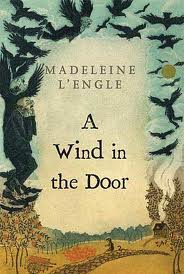
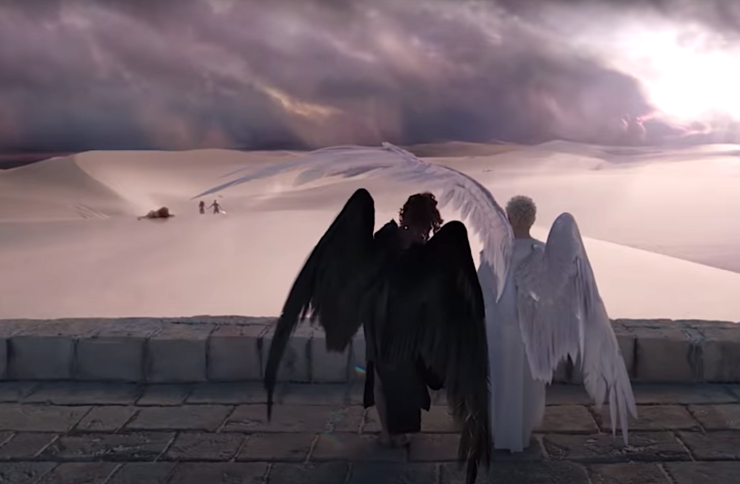
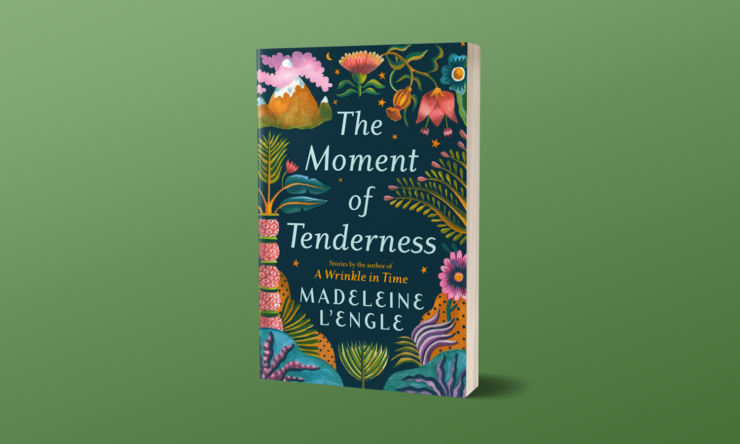
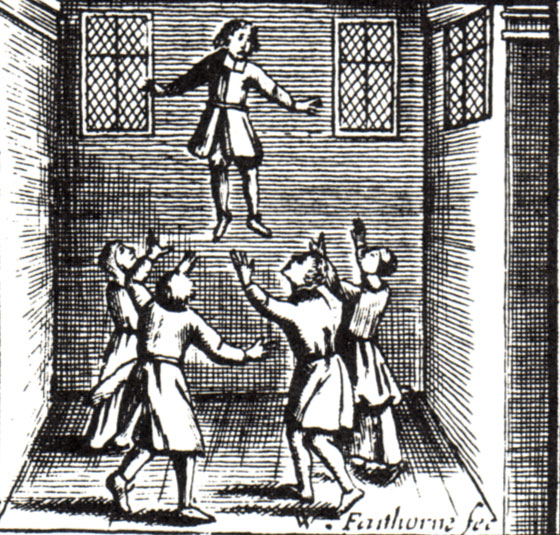
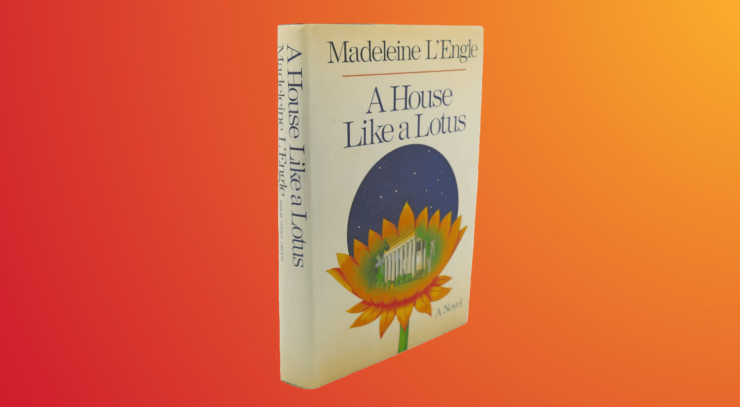
I believe L’Engle did the “singular cherubim” thing deliberately; somewhere she has Proginoskes claim to be about as “plural” as an individual creature can get. It’s a riff on a common grammatical error.
“(Was anyone else disappointed to enter biology class and find out that
while mitochondria certainly do exist, farandolae – not so much?)”
YES!
I remember in 10th grade biology, we had to make giant – sized models of cell parts, and I fought tooth and nail to get mitochondria, because, thanks to l’Engle, I knew they were made of awesome. Frankly, I’m still waiting for someone to discover farandolae. I know they’re out there. They make too much sense not to be out there.
My brother also wishes farandolae were real – I remember after he read A Wind in the Door, he was VERY EXCITED about mitochondria and farandolae, and he told all his friends about them. One friend told him he was wrong, and my brother, being the good logician he is, argued until the friend admitted defeat. When my brother told me about this, I then had to admit the truth to him… (he only believed me once I got my stepmother, an immunologist, to confirm the non-existence of farandolae).
Someday, someone’s going to find farandolae, and then we L’Engle fans must be sure to insist that they are given their righteous names. I’m just saying.
(Was anyone else disappointed to enter biology class and find out that
while mitochondria certainly do exist, farandolae – not so much?)
YES. But I didn’t mind learning the correct pronunciation of “mitochondria,” which I’d been saying as though “mitch” was part of it.
My wife and I also enjoyed finding out in biology class that mitochondria were real and were disappointed about the lack of farandolae.
I always took “kythe” to be derived from “kith” (as in “kith and kin”).
I love the poetic sequence at the end and reread it from time to time.
@@@@@(still) Steve Morrison — I will say that using “cherubim” instead of “cherubs” made me think more of dragons and less of cute children. I suspect that was L’Engle’s other goal — she wanted an easily recognizable angelic reference, and although Seraphim probably would have worked, Thrones and Dominions are a bit more obscure and project more of a sense of rulership than I think she was going for.
@@@@@Suzanne B — To be fair, mitochondria are INCREDIBLY fascinating even without farandolae — they have their own DNA and protein structures but sometimes steal the protein structures of the host cell and EVERYTHING (I am grossly oversimplifying.)
I think it would be cool to name one of the structures inside a mitochondrion a farandolae, but so far this idea hasn’t seemed to catch on.
@@@@@ellenw – Hee :) Although to be fair I’ve heard a couple of different pronounciations of that first syllable, and then a different pronounciation for the last syllables from a German biologist.
@@@@@Andy Love – Could be. I don’t know how familiar L’Engle was with either Chaucer or Scottish vocabulary.
My vague memory of the description of farandolae — both what they look like, and what they do — says that it would be appropriate to assign the name to ATP synthase. It was not known to exist at time of writing AFAIK, and was probably named by someone who hadn’t read the book. :)
I re-read this book a couple years ago, and it was a book I had a very different reaction to reading it as an adult (and a parent) than I had as a kid.
As a kid, I accepted Charles Wallace’s situation without question, but as a parent, that part of the book really bothered me. CW is being bullied, bullied so much that it’s affecting his health, maybe even endangering his life.
Rather than trying to remedy the situation, his teacher is actually making things worse and his parents’ reaction is to tell CW that he just has to “toughen up”, and learn to hide his intelligence so he’ll fit in better. They’re practically blaming him – telling him his victimization is occurring because he’s not acting right, or is too sensitive.
They don’t make any attempt to improve the situation – like talk to his school. I know the book really isn’t about the Murray parents, but reading this book as an adult, that really rankled me. Especially since the Murray’s are portrayed as likeable people, and loving parents – their actions here just don’t jibe with that for me.
Did anyone else find the “3 Mr. Jenkins” test ridiculously easy? I remember thinking as I read it that it was pretty obvious that only one of these even came close to matching the “Mr. Jenkins” who had been described in book up to that point and being kind of annoyed with Meg that she was having such a hard time with it. Although I suppose it’s one of those things that’s a lot easier when you aren’t actually under pressure.
I remember when I first read this book I assumed that both mitochondria and farandolae were fictional, so rather than being disappointed in the lack of farandolae, I was thrilled to learn that mitochondria were real. And even more so when I learned that most of what L’Engle said about them (they have their own DNA, they provide the cell’s energy) was true.
@7,
All of the books in this series seem to epitomize the “adults are useless” trope. I think the closest thing we get to a useful adult character is the grown-up Meg in Swiftly Tilting Planet.
I haven’t revisited this book since I was a child — maybe some part of me doesn’t want to find out that it’s not as good as I remember, heh. But I remember loving it even more than Wrinkle in Time — wasn’t at all disappointed by the cherubim, though Progo was amazing, and thought the Echthroi and the process of being “X’d” to be quite scary. I think I was sort of suprised to learn farandolae didn’t exist.
@C12VT: Interesting point about the bullying, which my reading of the book is too distant in time for me to recall; but what you describe sounds like it’s in line with what was considered the standard remedy from that era. I remember my father’s response to the bullying I endured in middle school and early high school was to try to teach me how to box.
I meant to add: I do remember being quite bewildered at the lack of connection with the previous book, eventually figured out that’s just how L’Engle rolled.
@C112VT — I have to agree with Mike Allen that the parental attitude towards the bullying is reflective of the standard remedy of the 1970s/1980s — learn to be more like other kids, or learn to deal. In the case of Charles Wallace, there’s the added implication, from Blajeny, that in later life Charles Wallace is going to need to act as if he’s normal, to avoid suspicion, and to blend in, and school bullying will teach him how to do this. In fact, his parents seem to have to reason to send him to school other than to learn how to get along with his peers – he’s clearly well beyond the first grade cirriculum. A similar thing happened to me — I wasn’t nearly as advanced as Charles Wallace, but I could read and add and subtract when I started kindergarten. My parents weren’t worried about knowledge; they were worried about me learning to get along with people. (Mind you, I loved kindergarten. It was later grades I had issues with.)
Oddly, this is completely against L’Engle’s usual “resist conformity,” so strong in A Wrinkle in Time and to a lesser extent The Moon by Night, although interestingly enough L’Engle’s characters often talk about resisting conformity and in later books take up very typical American middle class attitudes (this happens to Meg in the O’Keefe books, Suzy Austin in A Severed Wasp, and Vicky in Troubling a Star). I suppose that happens.
So although now I can definitely read this and think, ok, you both have PhDs, just homeschool the kid, or for that matter, move to NYC where your family won’t stand out as much for being odd, I can see how it fits into the 1970s culture of the time.
@Lsana – When I first read this, I hadn’t been paying enough attention to Mr. Jenkins to guess which one was the real Mr. Jenkins. I was reading the book for the dragons. On a reread, yes, that was a pretty easy test, but Meg doesn’t really know Mr. Jenkins that well, and has been so caught up in her own issues that she hasn’t been paying attention to what he was saying, so I let that one go.
And yes, between Mr. Murry “nope, can’t do much for you” in A Wrinkle in Time, the parents doing nothing to help Charles Wallace in this book, the parents saying, hmm, nuclear war? Let’s keep eating and get a dog in A Swiftly Tilting Planet, and the complete ineptitude of pretty much every adult in An Acceptable Time, the portrayal of adults in these books tends to project uselessness, unless we’re counting Mrs. Whatsit, Mrs. Who, Mrs. Which and Blajeny — and even those four step back at climatic moments and force the kids to handle matters. I’d add Dennys and Sandy to the list of useful adults in A Swiftly Tilting Planet, and Many Waters offers a slightly more complex picture.
@mike Allen – I think that A Wind in the Door is a better written, more satisfying book, although I may just be getting sucked in by that amazing poetic sequence in the end.
@@@@@11,
In Swiftly Tilting Planet, I seem to recall all that Sandy and Dennys do is have a chat with Meg and look up a few facts in the encyclopedia. Not unhelpful, certainly, but within the range of what adults are allowed to do in these books. I feel that Meg, by kything along, is going a few steps beyond.
On the conform/be yourself conflict, I think L’Engle’s message is more “Find a way to be yourself and still be a part of the broader society.” The goal isn’t to be Camotz-type automaton but it isn’t to be a status-smashing rebel either. I can’t remember exactly how Blajeny phrased it, but it was something along the lines of “learn how to adapt while remaining entirely yourself” as opposed to the Holden Caufield attitude of “@@@@@#$! you! I do what I want and anyone who doesn’t do as I do is a phony.”
In Charles Wallace’s case, he’s a genius, and he should remain one, and he shouldn’t be ashamed of it, but he needs to learn to be who he is without being an insufferable know-it-all who keeps showing off. And talking about mitochondria on the first day of first grade is showing off.
I think that of the three ‘Meg and Charles Wallace’ books, Wind in the Door is the strongest and best-written.
I found it odd that Meg didn’t compare her almost being X-ed with the pain of going through tesser when ‘It’ nearly got her. Clearly, the Echthroi and It are related. (I bet Aunt Beast could have cured Charles Wallace and gotten Sporos to deepen, with just a couple of hugs)
I loveed the concept of Metron Ariston. “We’re simply in an idea which Blajeny happens to be having in the middle of the Mondrion solarsstem in Veganuel galaxy.” (Hmmm- VEGA-nuel. Could Blajeny be related to the Mother Thing?)
I’ve decided that what I dislike most about the O’Keefe books is that the magic isn’t there. Other than An Acceptable Time, Polly’s world is Vicki Austin’s reality. (and Zachary is doing too much whining for me to enjoy that book)
The Wind in the Door is my favorite L’Engle book. I think it is beautifully almost poetic in its ideas as the Pan chapter in Wind in the Willows.
@Pam Adams — As I’ll be noting in the A House Like a Lotus, Polly does a major character shift between books, which is one of the book’s (many) problems. But you’re right — the lack of magic does weigh down the O’Keefe books, and, for what it’s worth, my favorite of the Austin books is A Ring of Endless Light (even if Zachary is in it, sigh), which certainly has more than a touch of magic. I think L’Engle was at her best when she allowed herself to write about such things, and more limited when she tried to work within reality. I suspect I might have enjoyed the O’Keefe books more had I not read them with the expectations of magic; then again I would never have read them had I not had the expectations of magic, and based on this reread, I don’t think they have the lasting power of A Wrinkle in Time or A Wind in the Door, and would be entirely forgotten if not for those books.
Regarding Meg’s memories — the oddest part of this book is the complete lack of remembering anything in A Wrinkle in Time — the pain of tessering/pain of getting Xed, the great shadows versus the Echthroi, and so on.
And yes, you’re right that Charles Wallace is showing off — but that brings up another parenting issue; he seems to have spent virtually no time with kids his age before this, even though kids are around, which is part of the problem. And even years later in the next book he doesn’t seem to have lost much of that arrogance.
@mbg1968 – I think the final poetic sequence of A Wind in the Door is among the best things that L’Engle ever wrote.
While this wasn’t my favorite O’Keefe book, I really related to both Meg and Charles Wallace a whole lot in this book. My parents sent me to a small religious school during elementary school (during the 80s), and because I’d come into Kindergarden knowing how to read and count, ended up in special reading and math lessons (which were often “go to the library and do these special problems on your own”). So I very much understand Charles Wallace’s frustration in school–he should be at that baby math genius school in that Law and Order: Criminal Intent episode.
I think this is my biggest problem with the book. You’d think the parents with their super-advanced degrees would realize that any child who didn’t speak for several years and then suddenly starts talking in full sentences probably will face lots of difficulties at your average public school. Not to mention, that AWIT makes it clear that people in town already think Charles Wallace is strange, and he’s faced situations no other elementary school child would even understand. Heck, I think after my first conversation with Principal Jenkins my child would be out of that school, even if I had no other option but home school. My own experience has shown me that an important part of social development is fitting in at school, so, yes, sometimes it may be better to look for an alternative than to tell the kid to “suck it up”, when it’s obviously not working.
It’s true that CW’s parents’ actions are consistent with norms at the time and the “adults are useless” vibe of the books. So it may be pointless to focus on this point; but it still bothered me a lot when I reread it, just as encountering especially blatant cases of racism, sexism, etc. in older books bothers me. I can contextualize it for myself, but I’m still not sure if I’d want my 7 year old to read this book.
I also think that at CW’s age, most kids would have trouble differentiating between “bragging” and “enthusiastically talking about what you know because you think it’s interesting”. Despite his great intellect, CW is still a little kid, with the emotional maturity and social skills of a little kid. Knowing what to say and how to behave to “fit in” is actually a pretty complicated skill: you have to know what behaviors and topics of conversation are considered “normal”, and what level of knowledge or thought or interest is “normal” to display. Even worse, “normal” means different things in different settings. At home, talking about mitochondria was normal for CW. And 6 year olds tend to assume that what they are familiar with is the way things are everywhere.
@TyranAmiros and C12VT – I think my own experience may have colored my initial reactions to this. By the time I read this book, I had already skipped two grades and flunked one and in my own personal experience, the two promotions had been far more painful than flunking a grade. So I was rooting for Charles Wallace not to be skipped ahead or treated as different.
Now, reading this later, I can only think, for crying out loud, home school the kid — but then again, that is coming in part from my realization that I would have been better off homeschooled after we returned to the U.S., instead of trying to be normal, since I was abysmal at that, and had a hellish time in school because of it. But that option hardly even occurred to my parents, and my guess is that L’Engle felt the same way.
Interestingly enough, in the last book of this series, the Murrys are homeschooling Polly O’Keefe; I wonder if this decision was partly based on their experiences with Charles Wallace, although in Polly’s case socialization isn’t an issue.
@C12VT — Correct about “normal” meaning different things in different settings; I do think that the Murrys think that Charles Wallace has to try to learn what normal is, even if public school may not be the best way to do so.
Doesn’t the book say they’d be teaching CW at home if it weren’t illegal? I was quite shocked by that as a child (that homeschooling would be illegal, I mean).
I have to admit I was disappointed at this book from the first. It just seemed too much of a muddle. There was some weird bit where they said Charles Wallace’s heart only beats about once a decade, so I couldn’t see why on earth they wouldn’t have just all the time in the world to convince the farandolae or whatever they were supposed to do. Even three seconds would be, y’know, twenty-five YEARS.
I never expected the Mrs. W’s to be around in this. I always took it that they were just waiting for an opportunity to send Charles and Meg off on their quest, and once that was over they weren’t going to be hanging around in one place any longer.
I think the test was not just figuring out which was the principal, but to look beyond the surface and past dealings with him and see the person inside trying to deal with life on planet Earth, too. She was to love him and accept him for who he is. It is all about growing up. Moving past petty differences and joining forces for the betterment of society. Meg and her old principal had a lot in common and that is why she faught with him so much. They both needed to discover their full potential. The bullying thing is really the mentality of the times, but in life we must overcome the bullying one way or another on your own to truely succeed. People have to conform to a degree in society to work within a society effectively. Charles I feel in today’s world would be assessed as being on the autistic spectrum. Alot in these books if you can reread them as an adult.
@20
Home-schooling really was illegal in many places in the US back then.
i couldn’t disagree more with absolutely every assertion in that paragraph.
Just read AWITD for the first time. “Flaws are nearly unnoticeable on a first read”? You have got to be kidding. This is a massively flawed book. The flaws are glaring on, yes, even a first read.
I generally liked A Wrinkle in Time, although admittedly more on first reading it as a child than on my second and third reads to my own children. But A Wind In The Door? Unbearable. What a terrible, terrible book. To suggest that it is underrated is to make a cosmic joke.